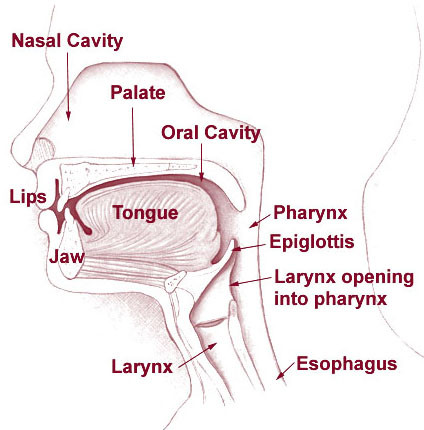Dripping Nose – Clear Watery, Blood, Thick White and Green
Why does the nose drip mucus?
Nasal problems typically present with a runny nose or nasal congestion. The mucous membrane lining the inside of the nasal cavity produces mucus throughout the day to keep the membrane moist. The constant movement of air through the nasal cavity with breathing can quickly dry up the membranes were it not for the mucus production. Normally this mucus drains into the back of the throat in small amounts. However, any irritation to the nasal mucosa (mucous membrane) can cause it to secrete profuse amounts of mucus which congest the nasal cavity and exit through the nose. This presents as dripping nose, also known as a leaky nose or runny nose. Medically the term is rhinorrhea.
Colors of Nasal Mucus
- Normally the mucus in the nose is clear, slightly sticky and thin and is known as a serous discharge.
- Acute and chronic irritation of the nose without an infection causes a thicker and slightly white discharge known as a mucoid discharge.
- Infections can lead to a thick white to yellow-green mucus similar to a mucoid discharge and is known as a mucopurulent discharge or purulent discharge. Acute infections tend to cause a white discharge while chronic infections typically have a green discharge.
- Bloody mucus indicates a more severe irritation or infection where the mucosa and blood vessels lying underneath it have ruptured.
The color and consistency of the mucus is not always a reliable indicator of the cause and should be sent for further laboratory investigation to identify the types of cells and microorganisms within it.
Other Symptoms
A dripping nose is a symptom of rhinitis. It may occur on its own or present with other symptoms such as :
- Nasal congestion
- Sneezing
- Itchy nose
- Dullness or loss of smell
The nasal cavity in interconnected with the oral cavity (mouth) and upper airway (throat). Therefore any cause of a dripping nose may also affect these other areas and therefore regional signs and symptoms will also be present. This includes :
- Red and watery eyes
- Itchy eyes
- Sore throat
- Hoarse voice
- Dullness or loss of taste
- Cough
Causes of a Dripping Nose
There are various different causes of a dripping nose and it is important to take note of other signs and symptoms which may help indicate the cause. A dripping nose is in most cases due to rhinitis – inflammation of the nasal mucus membrane. The paranasal sinuses are continuous with the nasal cavity and therefore inflammation of the sinuses (sinusitis) may also cause a dripping nose. When both the nose and sinuses are affected, the condition is known as rhinosinusitis.
- Allergies (seasonal or perennial allergic rhinitis) triggered by pollen, house dust mite and animal hair (dander). Sometimes certain foods and drinks can also serve as a trigger, particularly in children with a history of atopy.
- Environmental factors such as smoke, strong odors, smog, dry air, cold air, gas vapors and industrial dust.
- Foods and drinks can serve as trigger despite there being no allergies to this substance. This is know as gustatory rhinitis. It may occur with spicy foods and rarely with very sour food or drinks.
- Medication like certain drugs for high blood pressure, erectile dysfunction, anxiety and anti-inflammatory drugs. Long term use of medication to treat rhinitis, like with decongestants and corticosteroid nasal sprays, or discontinuing it may lead to rhinitis – this is known as rebound rhinitis.
- Hormonal fluctuations as is seen with pregnancy, the use of oral contraceptives and changes in the menstrual cycle.
- Structural abnormalities like a deviated septum or nasal polyps.
- Gastroesophageal reflux disease (GERD) where the backward flow of acid up the esophagus may reach as high as the nose.
- Foreign body in the nose usually seen in children.
- Repeated trauma with constant nose picking, inhaling tobacco (snuff) or illicit substances like sniffing cocaine.
- Influenza (flu) or common cold which are common viral infections of the upper respiratory tract.
- Bacterial infections which are more likely to arise secondary to a viral infection like the common cold.
- Fungal infections which tend to affect the paranasal sinuses more severely than the nasal cavity and are seen with prolonged corticosteroid use, long term antibiotics and in immune compromised patients.
Sometimes clear sticky fluid may be due to cerebrospinal fluid (CSF) leaking into the nasal cavity.
Treatment of Dripping Nose
Rhinitis can be treated with various medication either taken orally or topically in the form of nasal sprays.
- Decongestant nasal sprays are useful for controlling a dripping nose in acute cases but should not be used for more than a couple of days. Oral decongestants should also only be used for short periods.
- Antihistamines are available in tablet, liquid and nasal spray form. It is best suited for allergic causes of a dripping nose but can also provide short term relief in non-allergenic rhinitis.
- Corticosteroids are available as tablets for oral administration or can be used in a nasal spray. It should only be used when the dripping nose is persistent and not responding to other measures. Low dose sprays may be useful in chronic cases.
- Saline sprays are useful in rinsing out the nasal passages of any irritants. It can also be used even when rhinitis is not present to maintain the health of nasal mucous membranes.
Most viral infections will resolves spontaneously within a few days without the need for any further treatment. A dripping nose tends to persist for a short while thereafter and is the last symptom to ease. However, once secondary bacterial infections arise then antibiotics may be necessary. More specific treatments will depend on the cause of a dripping nose.






